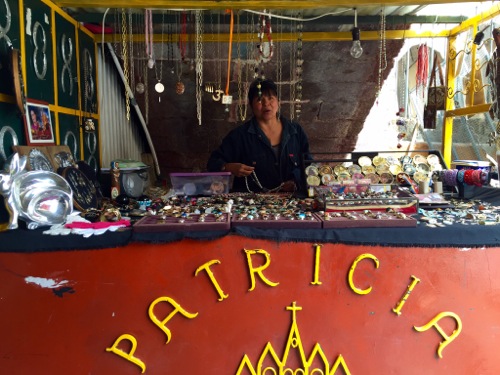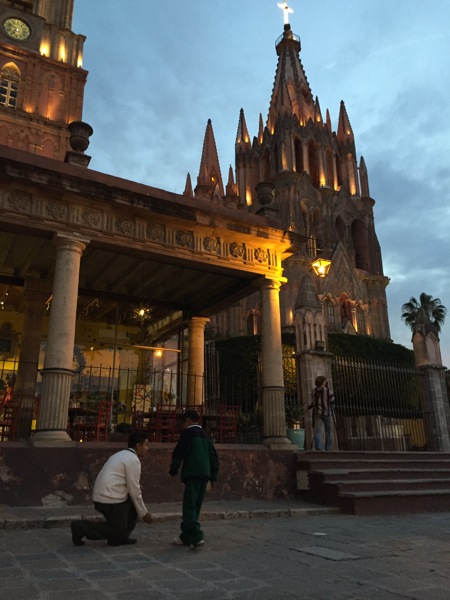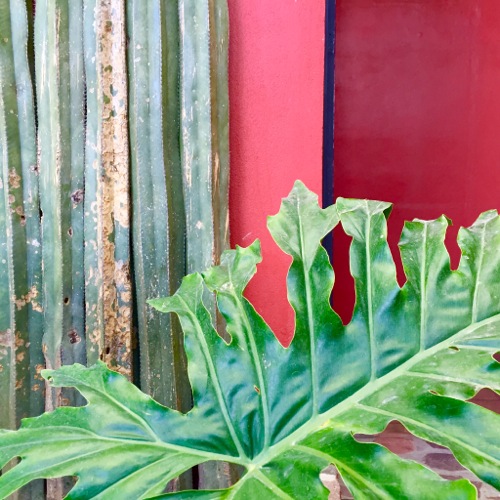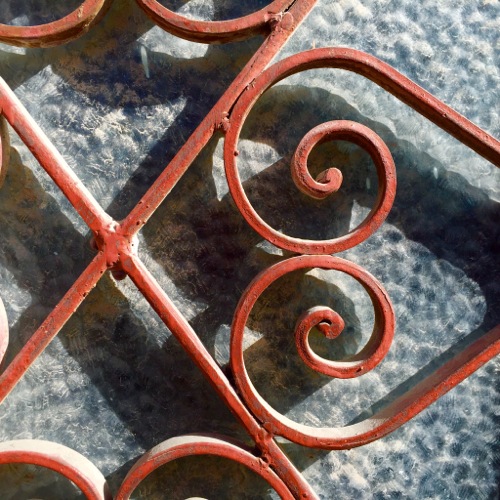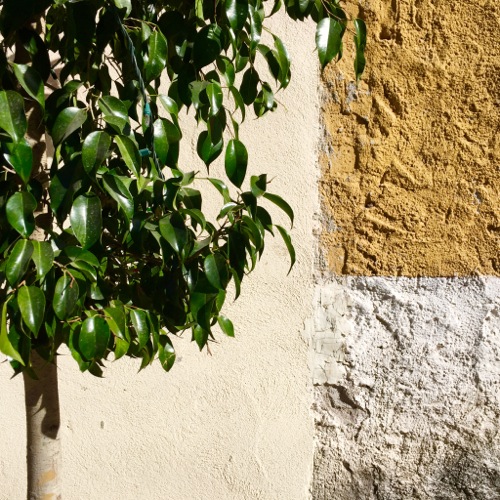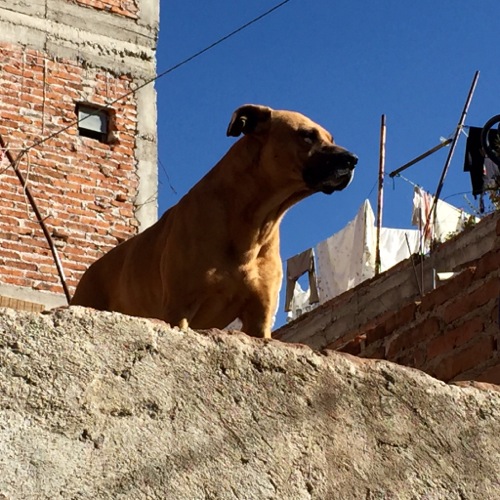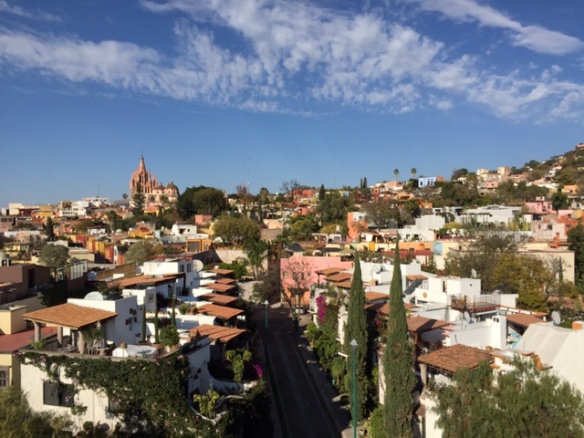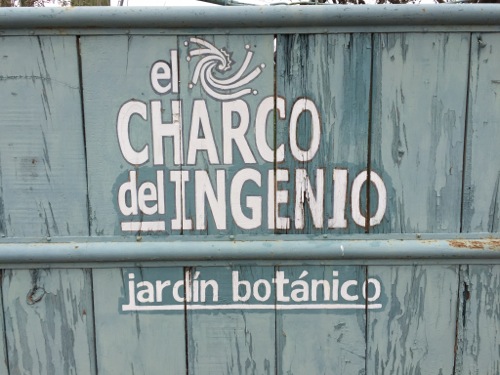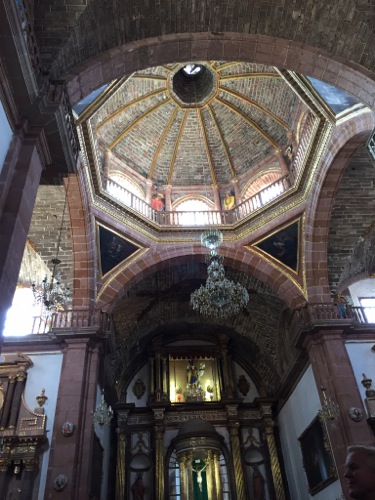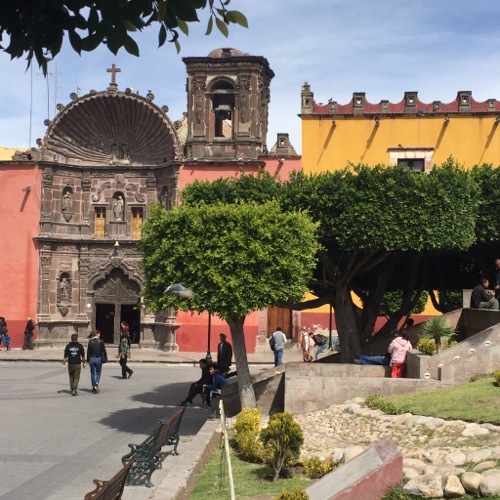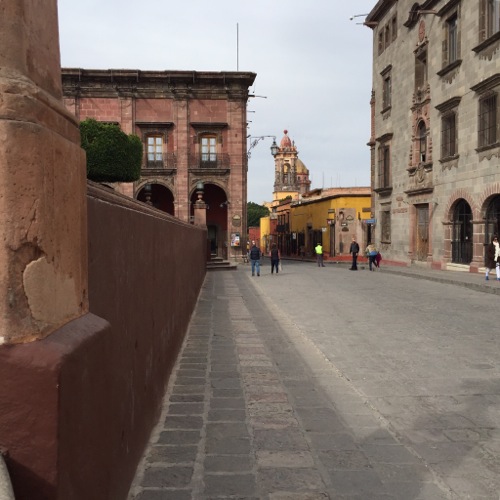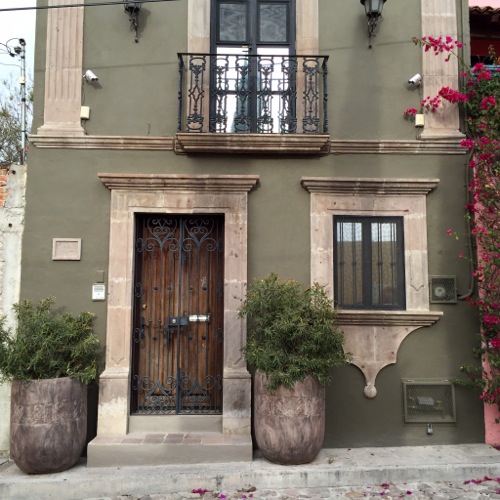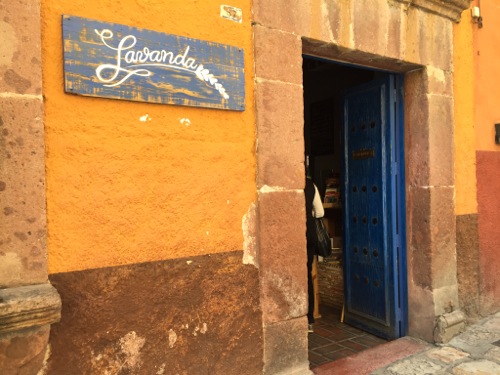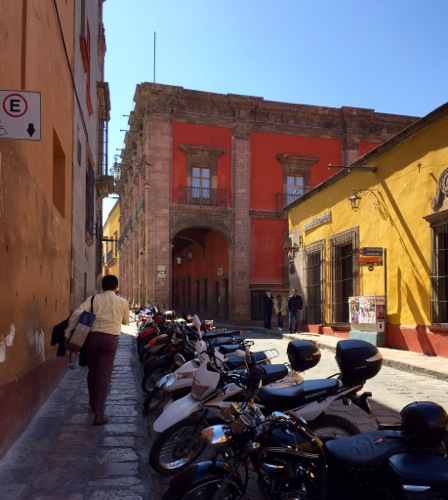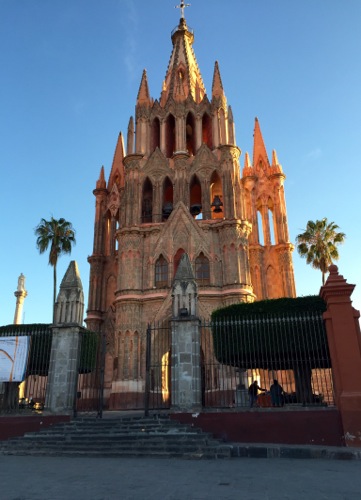
MY TWO-WEEK VISIT TO THE MEXICAN FANTASY-VILLAGE of San Miguel de Allende is coming to an end. I have only good things to say, except in one regard: the drinking water.
It’s true what they say: don’t drink it. And I didn’t mean to, but there it was on the table in a restaurant frequented by American tourists, where we’d been before. Without thinking, I picked it up and drained the glass. At least, I think it was that glass of water that caused me to spend more than 30 precious vacation hours in bed, a plastic wastebasket by my side. BOTTLED WATER ONLY.
Fortunately, the bed is comfortable, the internet only went down for an hour, and today I’m feeling human again.
My release from stomach misery, today’s perfect weather and my impending departure have made me appreciate this place all the more.
The Spanish-style historic architecture, long vistas to the western mountains from the tops of hilly, stone-paved streets, rooftop gardens filled with thriving plants, the sophisticated Mexican modern aesthetic in certain galleries and restaurants — all that I was bound to like.
Other things have been more of a surprise. At first I was put off by there being so many North Americans present, and thought maybe there was something exploitative about it. Now I think it’s probably the best thing that could happen to a Mexican town, and I’m guessing most locals would agree.
San Miguel still feels thoroughly Mexican, at least to me. But there is a sort of comfort factor in there being so many Americans here. This entire hotel is made up of us, mostly 60’s and older. We meet in the lovely circular garden, and they’re Democrats, I can tell. How? The hotel’s community room hosts meetings of the Occupy SMA group and shows films about climate change. (The Texans who build mega-mansions up in the hills? Probably not Democrats.)
I haven’t seen so much hippie-style clothing on women since 1969 — oversized earrings, fringed shawls and scarves, floppy hats, long skirts.
How to spend the days hasn’t been a problem. After the photo workshop, there was an event billed as a “Beat” cantina crawl, and I feared hokum. It took us into places I’d have been afraid to go on my own: Gato Negro, the second-oldest bar in San Miguel, from 1929; El Cu Cu, the most attractive of them, from 1955; and La Cucaracha, a fluorescently-lit, scary-looking place where some seedy characters were already hanging around the bar when our group entered.
It is to their credit that I didn’t realize they were actors, about to impersonate and read the poetry of Jack Kerouac, William Burroughs, Neal Cassady and Diane di Prima with great bawdy spirit (not all of them actually spent time in San Miguel, but… poetic license). At each stop, we drank mezcal, which I now think of as smoother tequila. Need I say it turned out to be loads of fun, and more authentic than hokey.
A word about the shopping here. It’s varied and abundant. Not just the high-end galleries under the arches of old haciendas, which are reasonably priced for the quality of their textiles, furnishings, pottery, metalware, etc. But also (my bailiwick) the street markets. They are sprawling — they just go on and on — and open every day under corrugated tin roofs. Even what may look at first like schlock bears scrutiny. Many of the vendors, like Patricia, below, who sells silver jewelry, design and make their own wares.
Market-shopping here is stress-free. The vendors are not pushy; in fact, it’s sometimes hard to get their attention. I’d buy more — rugs, blankets, pottery — but don’t want to acquire more than I can take on the plane.
The food, it seems, can be excellent or mediocre. My favorite so far: La Mezcaleria, a chic little place, for both food and design. But you’d have to be in San Miguel a lot longer than I am to run out of places to try. And with those American dollars, we can try the most upscale places in town.
Bottom line in San Miguel: you need do nothing but walk the streets. There’s aesthetic pleasure at every turn.




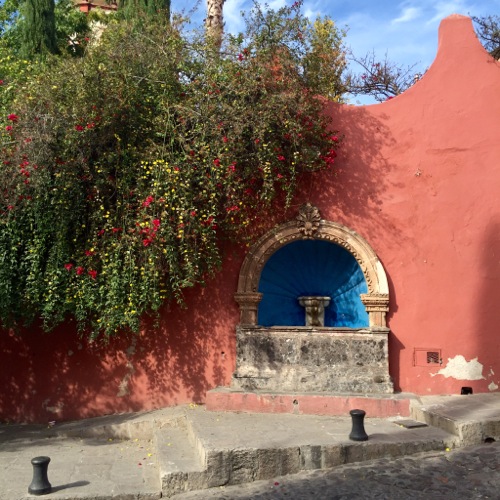




La Mezcaleria on Correo, with their cucumber and cilantro margarita


El Gato Negro


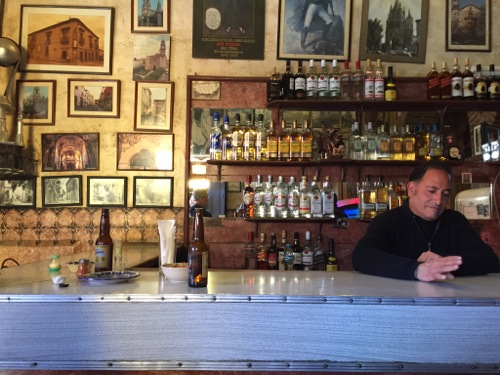
El Cu Cu

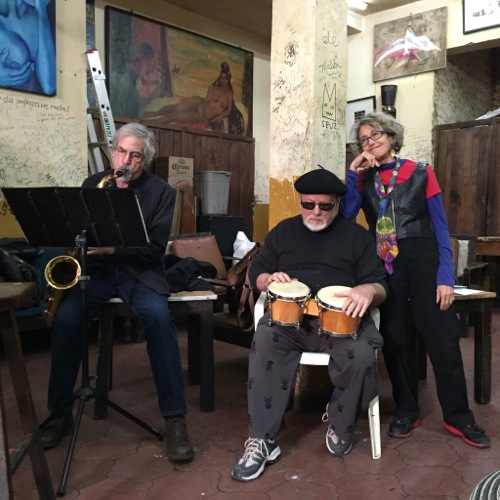
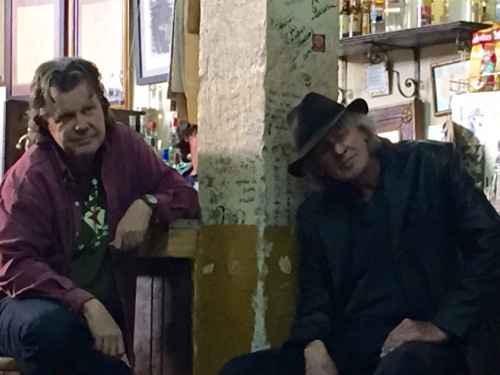

La Cucaracha, left to right: “Neal Cassady,” “William Burroughs” (in hat), bored bartender, the director, “Jack Kerouac”

